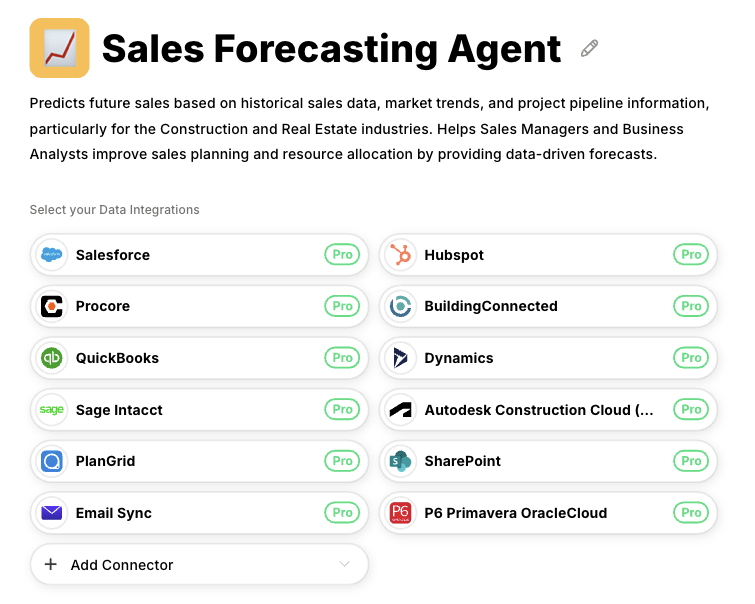Learn what prospect enrichment is, how it works, and why sales ops teams use it to automate research and process more leads without adding headcount.
Your sales ops team starts Monday with twenty leads to qualify. By Friday, the backlog hits eighty. Nothing changed in your process, just the volume.
Manual research caps at a handful of prospects weekly while inbound keeps growing. Someone spends three hours building one profile: LinkedIn for the job title, company site for revenue, and databases for funding. Meanwhile, fifty more leads sit waiting.
Prospect enrichment automates this research bottleneck. Instead of manually gathering data one lead at a time, enrichment systems scan multiple sources simultaneously and populate your CRM overnight.
This guide explains what prospect enrichment is, how it works, which data types matter for qualification, and how to implement it without creating more problems than you solve.
What is Prospect Enrichment?
Prospect enrichment transforms bare contact records into complete profiles automatically. A lead enters your CRM with just a name and email. The system scans business databases, social platforms, and company sites, pulling relevant data. Within minutes, that record gains:
- Job title and department
- Company size and revenue
- Tech stack and integrations
- Funding history and growth signals
- Buying signals from web activity
The system checks multiple sources and compares what it finds. Three platforms show the same job title? That data flows into your CRM as verified. Sources conflict? It flags the discrepancy. This catches errors that happen with single-source research.
New records get created automatically, and existing ones fill in with more intelligence.
Monitoring continues after the initial sweep. Job changes, funding rounds, tech adoption—the system catches updates and syncs them to your CRM. Someone moving companies? Your database reflects it within days.
Your reps open contact records and everything's already there. Complete profiles, verified data, current information. The research happens automatically in the background.
Types of Prospect Data in B2B Sales
Enrichment platforms pull four types of intelligence. Each one solves a specific qualification or outreach challenge.
Firmographic Data in B2B Sales
Know if prospects fit your ideal customer profile before writing the first email. Firmographic data reveals company size, revenue, industry, growth stage, and funding rounds.
A company that just closed a funding round has budget and urgency. A bootstrapped startup needs cost-focused messaging. Route high-value accounts to senior reps while nurturing lower-fit prospects. Generic campaigns become targeted outreach that speaks to each company's actual stage and priorities.
Contact Data in B2B Sales
Reach decision-makers directly instead of hitting gatekeepers. Contact data provides job titles, verified emails, direct phone numbers, departments, and seniority levels.
Emailing a shared inbox gets you buried. Reaching the VP Finance directly starts conversations. Verified contacts mean fewer bounced emails. Current job titles mean you're not pitching someone who moved companies months ago.
Technographic Data in B2B Sales
Show integration value and address compatibility concerns before the first call. Technographic data reveals CRM platforms, marketing tools, collaboration software, and analytics systems that prospects currently use.
When you know they run compatible systems, integration conversations happen immediately. When you spot legacy infrastructure, you address migration concerns upfront instead of hitting blockers later. This intelligence shapes your demo and highlights relevant pain points.
Behavioral Data in B2B Sales
Time outreach when prospects are actively researching, not months later. Behavioral data tracks website visits, content downloads, pricing page views, demo requests, and competitor research.
Multiple pricing page visits followed by case study downloads signal active evaluation. Enrichment catches these patterns and triggers alerts so you reach prospects while they're researching. Cold outreach becomes timely conversations that meet prospects exactly where they are.

How Does Prospect Enrichment Work?
Data collection starts when a lead enters your CRM. The system scans business databases, social platforms, and company sites at the same time, pulling job titles, company metrics, tech stack details, and funding information.
A basic name-and-email record becomes a complete profile within minutes.
Verification compares what it found across multiple sources. When several platforms report the same job title or company size, that data gets marked as verified. When sources conflict, the system flags it for review.
This catches errors before they enter your CRM.
CRM integration pushes the verified data into your existing system. Fields populate automatically, new records get created when needed, and existing ones gain additional intelligence. No CSV exports or manual typing required.
Continuous monitoring keeps working after that initial enrichment. The system watches for job changes, funding announcements, and technology shifts. When something changes, your CRM updates automatically. Data stays current instead of slowly going stale.
Automated vs. Manual Prospect Enrichment
Manual enrichment means researching prospects individually. You check profiles, visit company sites, verify contact information, and then enter everything into your CRM manually. Hours per lead.
Automated enrichment uses software to scan multiple data sources simultaneously, verify the information across platforms, and update your CRM records automatically. Happens overnight without manual work.
Manual enrichment processes one lead at a time with information from single sources. Updates require someone to do the research again. More leads mean hiring more people.
Automated enrichment processes hundreds or thousands in parallel with cross-verified data from multiple sources. Updates happen automatically when information changes. Volume scales without additional headcount.
The practical outcome: manual enrichment creates growing backlogs while data goes stale. Automated enrichment keeps records current continuously, so reps open complete profiles ready for outreach.
Business Impact and ROI of Automated Prospect Enrichment
Sales ops teams spend most of their time on tasks that don't require manual research, data entry, and fixing outdated records. The impact of automated enrichment shows up in what your team can stop doing and what that freed capacity actually accomplishes.
Automated enrichment delivers five measurable results:
- Teams reclaim hours weekly previously spent on manual research
- Response rates increase substantially with personalized outreach
- Sales cycles compress as discovery calls skip basic questions
- Forecast accuracy improves with continuously verified data
- ROI becomes positive within months of implementation

Common Applications of Prospect Enrichment in Sales Operations
Prospect enrichment addresses several operational challenges in sales operations. Here's where teams apply it:
- Lead Qualification at Scale: Sales ops teams can process higher lead volumes in the same timeframe. Automated scoring handles monthly batches rather than capping at manual weekly limits.
- Account-Based Marketing (ABM): Teams run ABM programs on more accounts simultaneously. Complete buyer profiles become available for campaigns without weeks spent on manual research per account.
- Sales Territory Planning: Territory managers have company metrics available for assignment decisions. Accounts get distributed based on size, growth indicators, and geographic data rather than limited information.
- Competitive Intelligence: Sales teams can identify what technology prospects currently use. This information helps customize messaging around compatibility or replacement scenarios.
- Renewal & Expansion: Customer success teams receive signals about account changes—hiring activity, funding events, usage patterns. These indicators help identify when to initiate expansion discussions.
5 Best Practices that Solve Common Enrichment Problems
Most enrichment implementations fail quietly. Teams connect the tools, data starts flowing, but six months later, reps still do manual research because they don't trust what the system provides. These five practices prevent that failure pattern.
Establish Baseline Metrics before Starting
Track one week of actual research activity before implementing enrichment:
- How many hours does your team spend on manual research?
- How many prospects get fully researched versus left incomplete?
- What's waiting in your backlog?
- What specific data gaps do reps complain about most?
This measurement reveals the true cost of manual research. Most teams think they spend "some time" on research but tracking reveals it's actually fifteen to twenty hours weekly for a three-person ops team.
That baseline becomes your benchmark for proving ROI. When you show six months later that the same team processes five times the volume in half the time, you have concrete proof of impact. Without baseline numbers, you're guessing whether implementation succeeded.
Map Enrichment to Qualification Decisions
Don't enrich every available field because it sounds useful. Identify which fields drive actual routing, scoring, or personalization decisions in your workflows.
Enrich company size when it determines territory assignment. Enrich tech stack when compatibility affects win rates. Job title and seniority level matter for reaching decision-makers. Funding history helps identify prospects with budget and urgency.
Skip everything else. Map each enriched field to a specific action—lead scoring, routing rule, or personalization trigger. Fields that don't inform decisions or trigger workflows shouldn't be collected.
The goal is relevant intelligence that enables qualification and progression, not comprehensive profiles that overwhelm reps with information they'll never reference.
Validate Accuracy with a Pilot Segment
Start with one focused segment—your top hundred enterprise accounts, leads from one high-performing channel, or prospects in a single territory. Run enrichment on this subset while you validate accuracy and measure impact.
Check enriched records manually against sources for the first few weeks. Verify that company size matches their website and job titles are current. Ask reps using these records whether the data helps them qualify faster.
Track whether conversion rates improve compared to leads still using manual research. Problems surface quickly in small segments—maybe certain data sources provide outdated information, or enrichment rules need adjustment for specific industries.
Fix these issues while they affect a few hundred records instead of discovering them after enriching your entire database. Expand systematically once the pilot shows measurable improvement.
Trigger Automated Actions from Enriched Data
Enrichment that only fills fields delivers minimal value. The real power comes from triggering actions based on enriched data without requiring manual review.
Configure lead scoring that uses firmographic data automatically—company size, industry, and growth stage feed into scoring models that prioritize high-value prospects.
Build routing rules that assign prospects based on technographic compatibility so accounts using complementary tools go to reps with relevant experience. Set alerts when behavioral signals indicate buying intent—pricing page visits or repeated content downloads trigger timely outreach. Create nurture sequences that adapt based on engagement patterns.
These workflows convert passive data into active pipeline generation while reps focus on conversations instead of reviewing fields.
Audit Field Usage and Remove What Doesn't Drive Results
Review quarterly, which enriched fields correlate with closed deals and which populate but never get referenced in conversations, emails, or internal notes. Remove or deprioritize fields that don't get used. If you're enriching detailed employee count ranges but routing only uses enterprise versus SMB classification, simplify.
Add new sources when qualification criteria evolve. If you start selling to healthcare and need compliance indicators, add sources that provide that intelligence. Adjust update frequency based on how often data actually changes.
Contact information changes frequently and justifies continuous monitoring. Industry classification rarely changes and doesn't need constant refreshing.
Datagrid’s AI Agents will Help You Automate Prospect Enrichment
Manual prospect research consumes the hours your sales ops team needs for qualification and pipeline analysis. Datagrid creates AI agents that eliminate this bottleneck automatically.
- Enrich prospects at scale: Scan business databases, social platforms, and company sites simultaneously to build complete profiles from basic contact records—process thousands overnight instead of dozens weekly
- Verify data across sources: Cross-reference information across multiple platforms and assign confidence scores so your CRM contains accurate intelligence, not single-source guesses
- Integrate with your CRM automatically: Push verified data directly into Salesforce, HubSpot, or your existing system without CSV exports or manual data entry
- Monitor changes continuously: Track job moves, funding announcements, and technology shifts in real-time so your prospect data stays current instead of decaying between manual updates
- Scale without adding headcount: Process hundreds or thousands of leads in parallel while manual research capacity stays fixed—qualification throughput grows without hiring more researchers
Ready to eliminate manual prospect research?










